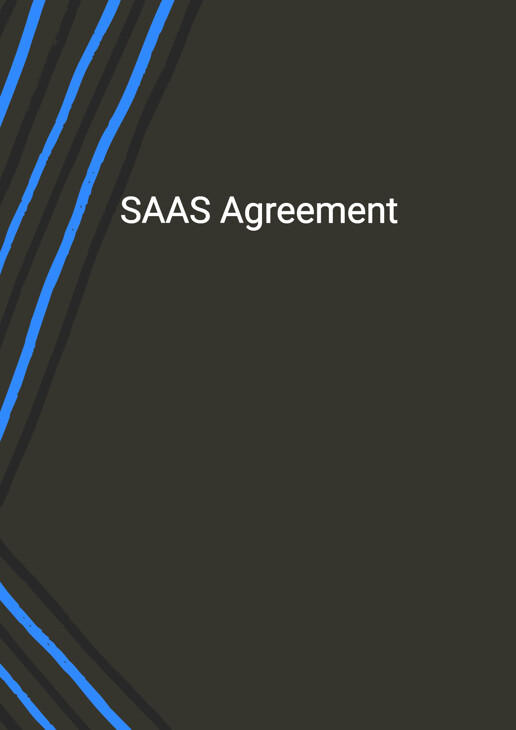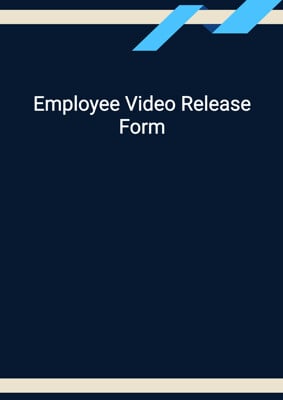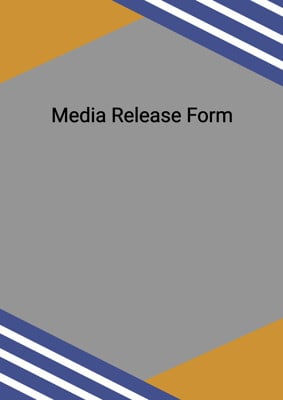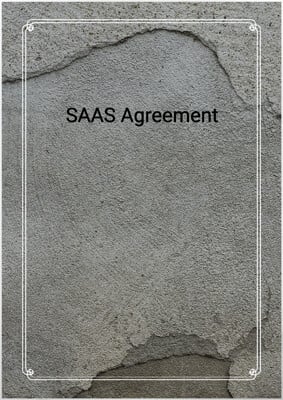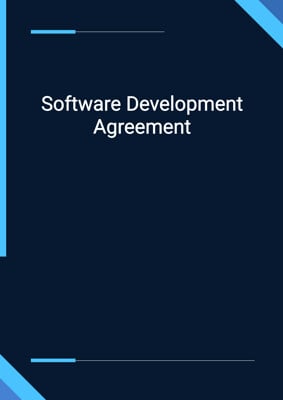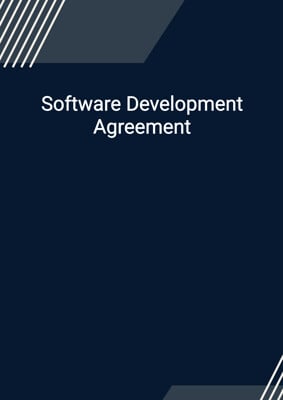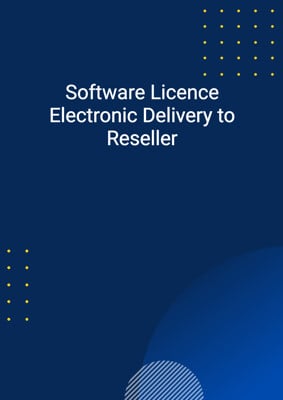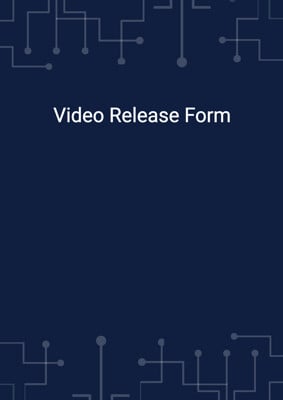How to Tailor the Document for Your Need?
01
Create Document
Fill in the details of the parties. You can click the "Fill with Member’s Information" button to complete it with information saved to your account.
02
Fill Information
Please fill in any additional information by following the step-by-step guide on the left hand side of the preview document and click the "Next" button.
03
Get Document
When you are done, click the "Get Document" button and you can download the document in Word or PDF format.
04
Review Document
Please get all parties to review the document carefully and make any final modifications to ensure that the details are correct before signing the document.
Document Preview
Document Description
The SAAS Agreement is a legal document that outlines the terms and conditions between the company and the client for the use of the software provided by the company. This document aims to ensure both parties are aware of their responsibilities and obligations.
The document is divided into several sections. Section 1 provides definitions for key terms used throughout the document.
Section 2 outlines the responsibilities of both parties, particularly focusing on the point that the company agrees to provide the services professionally and diligently. The customer should also maintain its log-in details well.
Section 3 grants the Customer a nonexclusive and non-assignable license to access and use the services for its internal business operations. It clarifies, however, the Customer is not granted a license to the software itself.
Section 4 sets out the limitations on the customer’s use of the services. The customer is prohibited from copying the software, reverse engineering it, or using it to store or transmit unlawful material. Any unauthorized use of the services leads to termination of the license granted.
Section 5 specifies the fees paid by the customer, and outlines the consequences of laye payment and exclusion of taxes.
Section 6 confirms that the company owns all rights, title, and interest in the services and the software, reserving all intellectual property rights.
Section 7 limits the liability of the company and its affiliates for any loss or damage resulting from the use of the services. It also provides the customer's sole and exclusive remedy for dissatisfaction with the services.
Section 8 requires the customer to indemnify and hold harmless the company from any claims or liabilities related to the customer's use of the services.
Section 9 clarifies that the customer owns and accepts responsibility for any data processed or submitted to the service. The Customer is responsible for ensuring compliance with applicable laws and obtaining necessary consents.
Section 10 disclaims any responsibility for suspension or interruption of the service and states that the company does not guarantee an uninterrupted operation of the system.
Section 11 imposes obligations on the customer to keep the terms of the agreement and any information disclosed by the Company confidential, while section 12 specifies the duration of the agreement and the conditions for termination by either party.
Section 13 - 22 are miscellaneous provisions which include 'Force Majeure', 'Assignment and Other Dealings', 'No Partnership or Agency', Waiver', 'Entire Agreement', 'Severance', 'Notices', 'Counterparts', 'Right of Third Parties', and 'Arbitration and Proper Law'.
Lastly, the document also includes a schedule for services and fees, providing details of the service plan, description, period, amount, currency, and any applicable discounts.
Overall, the SAAS Agreement is a comprehensive document that covers all aspects of the relationship between the company and the client.
How to use this document?
To use the SAAS Agreement, follow these steps:
1. Review the entire agreement: Read through the entire agreement to understand the terms and conditions outlined.
2. Understand the definitions: Familiarize yourself with the definitions provided in the 'Interpretation' section to ensure a common understanding of the terminology used.
3. Determine responsibilities: Identify the responsibilities of both the Company and the Client outlined in the 'Responsibilities' section. Ensure that you understand your obligations and the expectations of the other party.
4. License to use the services: Understand the scope of the license granted to you in the 'License to Use the Services' section. Note that the license is limited to internal business operations and does not include the software itself.
5. Adhere to restrictions: Take note of the restrictions outlined in the 'Restrictions' section. Ensure that you comply with these restrictions to avoid termination of the licenses granted.
6. Payment terms: Familiarize yourself with the payment terms specified in the 'Payment Terms' section. Ensure that you understand the fees, due dates, and consequences of late payment.
7. Intellectual property rights: Understand that the Company owns all intellectual property rights in the services and the software, as stated in the 'Intellectual Property' section.
8. Limitation of liability: Be aware of the limitations of liability outlined in the 'Limitation of Liability' section. Understand your rights and the Company's responsibilities in case of any loss or damage.
9. Indemnification: Take note of the indemnification obligations stated in the 'Indemnification' section. Understand that you are responsible for any claims or liabilities related to your use of the services.
10. Customer data: Understand your ownership and responsibility for any customer data processed or submitted to the service, as outlined in the 'Customer Data' section. Ensure compliance with applicable laws and obtain necessary consents.
11. Liability disclaimer: Be aware of the liability disclaimer in the 'Liability Disclaimer' section. Understand that the Company does not guarantee uninterrupted service and disclaims certain responsibilities.
12. Confidential information: Understand your obligations regarding the confidentiality of the agreement and any disclosed information, as stated in the 'Confidential Information' section.
13. Term and termination: Familiarize yourself with the duration of the agreement and the conditions for termination outlined in the 'Term and Termination' section.
14. Force majeure: Take note of the force majeure provision in the 'Force Majeure' section. Understand that neither party shall be liable for delays or failures due to events beyond their control.
15. Assignment and other dealings: Ensure that you do not assign or transfer any rights or obligations under the agreement without the prior written consent of the other party, as stated in the 'Assignment and Other Dealings' section.
16. Waiver: Understand that no failure or delay in exercising any right or remedy shall constitute a waiver, as stated in the 'Waiver' section.
17. Entire agreement: Recognize that the agreement constitutes the entire agreement between the parties, as stated in the 'Entire Agreement' section.
18. Severance: Note that any invalid or unenforceable provision of the agreement may be modified or deleted, as stated in the 'Severance' section.
19. Notices: Follow the specified methods for giving notice under the agreement, as outlined in the 'Notices' section.
20. Counterparts: Understand that the agreement may be executed in multiple counterparts, as stated in the 'Counterparts' section.
21. Right of third parties: Recognize that third parties have no right to enforce the terms of the agreement, as stated in the 'Right of Third Parties' section.
22. Arbitration and proper law: In case of any disputes, attempt to resolve them amicably and refer to the specified jurisdiction for legal proceedings, as stated in the 'Arbitration and Proper Law' section.
By following these steps, you can effectively use the SAAS Agreement and ensure compliance with its terms and conditions.
Not the right document?
Don’t worry, we have thousands of documents for you to choose from:
